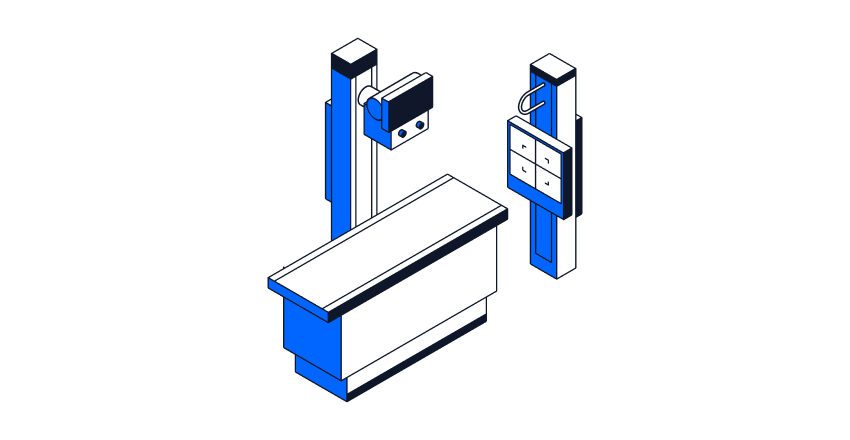Preparing for an MRI: What to Wear, What to Avoid and Other Tips
July 25, 2024
Read More
Dr. Ania Kielar, vice-president of the Canadian Association of Radiologists and vice-chair of the University of Toronto’s department of medical imaging, explains what an X-ray is and why the procedure is so valuable as a first test when diagnosing a patient.
What is an X-ray?
An X-ray is a painless, low-risk procedure that uses electromagnetic energy to generate images of the internal structures of the body. As X-rays pass through a patient they are absorbed in varying degrees (depending on the density of the objects they encounter) before being captured on film or digital media on the other side. Dense objects, such as bones or tumours, appear white on an X-ray, while soft tissues, such as skin, fat and muscle, look grey.
Depending on the body part being investigated, technicians may take more than one image, targeting structures that are perpendicular to one another to provide as much information as possible. “It’s the first test we use for most things but it’s not the most complex test,” Dr. Kielar says. “It can answer some questions but not everything. If we don’t see anything on an X-ray and the symptoms are significant, then we’ll move on to another test like a CT scan. It’s more accessible than other tests and there’s less radiation compared to a CT scan.”
What does an X-ray show?
X-rays are particularly good for examining bones (for fractures, osteoporosis or cancer), teeth (dental decay), the chest (breast cancer, blocked blood vessels or lung infections) and the abdomen (digestive issues or blockages).
How long does an X-ray take?
Usually, only a matter of minutes.
How can patients prepare for an X-ray?
There’s nothing they really need to do in advance, Dr. Kielar says. “The technologist will ask you to remove anything, if necessary. If you’re getting an X-ray of your wrist, you don’t want to be wearing a bracelet. If you’re getting a chest X-ray you don’t want to wear a necklace. If you have things that are pierced that you can’t remove, then you leave them.”
Is there anything patients should do after an X-ray?
It depends on the results of the procedure but patients can generally go about their day as normal.
Are there any concerns or risks that accompany an X-ray?
As with any procedure involving low levels of radiation, there are some considerations. “We try to avoid it in people who are pregnant,” Dr. Kielar says. “We won’t X-ray the abdomen if we can help it, but it depends on the situation. We always try not to radiate people who are pregnant and we try to avoid it in children for the same reason. But if you have a fractured wrist, the radiation to the fetus is nothing, essentially, so we can still do the X-ray. We always have lead around and we collimate — meaning the X-ray is very specific to that area — so it’s not all over the place. It only goes to the section we’re interested in.”
How long does it take for results to come back?
“It usually takes a few days, depending on how many X-rays are taken at a particular site and when the radiologist is able to get to it,” Dr. Kielar says. “In the emergency department the results are almost immediate.”
Has the pandemic changed the way X-rays are performed?
“We just clean more in between, that’s it.”